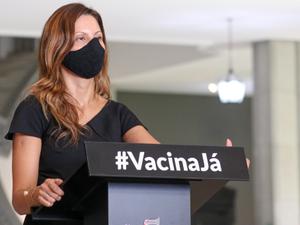Mesmo autorizada, Várzea Paulista (SP) suspende aulas presenciais

Mesmo autorizada pelo governo de São Paulo para seguir com as aulas presenciais na fase vermelha, a Prefeitura de Várzea Paulista (SP) decidiu suspender as atividades nas escolas na rede municipal de ensino até o dia 19 de março.
"A medida considera a necessidade de zelar e cuidar da vida dos membros da comunidade escolar e, paralelamente, manter ativo e operante o Sistema Municipal de Educação de Várzea Paulista", disse, em nota, o Executivo local.
As aulas presenciais na rede estadual de ensino seguem normalmente em Várzea Paulista, localizada na zona urbana de Jundiaí (SP). Sobre as aulas na rede privada, a prefeitura recomendou que as escolas também paralisem as atividades presenciais até o dia 19 de março.
Mesmo com a paralisação presencial, as aulas prosseguem por meios remotos. Ainda na nota, a Prefeitura de Várzea Paulista orientou que responsáveis e estudantes acompanhem as atividades à distância por meio da Plataforma Educacional, no Portal do Cidadão.
Como ficam as escolas na fase vermelha
As escolas da rede estadual seguirão abertas em toda SP para estudantes que precisarem de alimentação e estiveram com dificuldade de o à tecnologia, "severa defasagem" de aprendizado, com a saúde mental em risco e com os pais trabalhando em serviços essenciais.
As unidades de ensino municipais, como as de Várzea Paulista, e particulares foram autorizadas a seguirem abertas, desde que o limite de ocupação de 35% seja respeitado. A decisão final, pela abertura ou não, entretanto, ainda cabe aos municípios e aos gestores particulares.
















ID: {{comments.info.id}}
URL: {{comments.info.url}}
Ocorreu um erro ao carregar os comentários.
Por favor, tente novamente mais tarde.
{{comments.total}} Comentário
{{comments.total}} Comentários
Seja o primeiro a comentar
Essa discussão está encerrada
Não é possivel enviar novos comentários.
Essa área é exclusiva para você, , ler e comentar.
Só s do UOL podem comentar
Ainda não é ? Assine já.
Se você já é do UOL, faça seu .
O autor da mensagem, e não o UOL, é o responsável pelo comentário. Reserve um tempo para ler as Regras de Uso para comentários.